Table of contents
Are you familiar with lemongrass tea?
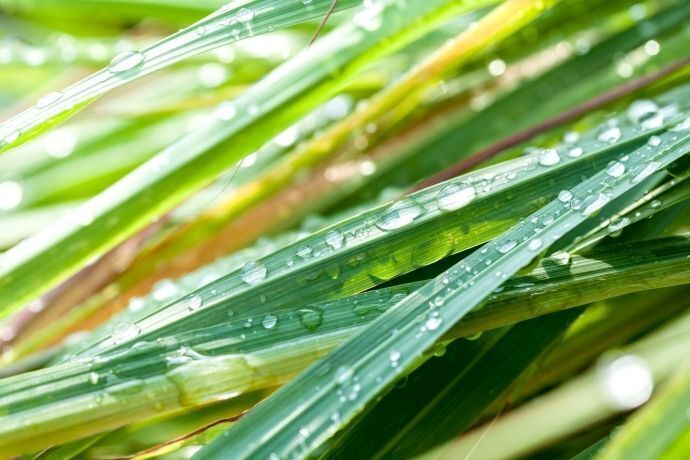
If you are looking for a soothing or natural muscle pain reliever, lemongrass tea can be a great alternative. Also known by its scientific name Cybopogon citratus, it is a plant that has several natural properties, whether they are soothing, sedative, analgesic, anti-inflammatory or antioxidant.
But with so many good properties for our body, it is not synonymous that we should consume this herb so often or in absurd amounts. Whether in the form of tea, refreshments, infusions, or in the form of herbal medicine in capsules.
In this article we will talk about lemongrass tea, all its properties and medicinal uses, its characteristics, contraindications and more.
Understanding more about lemongrass tea
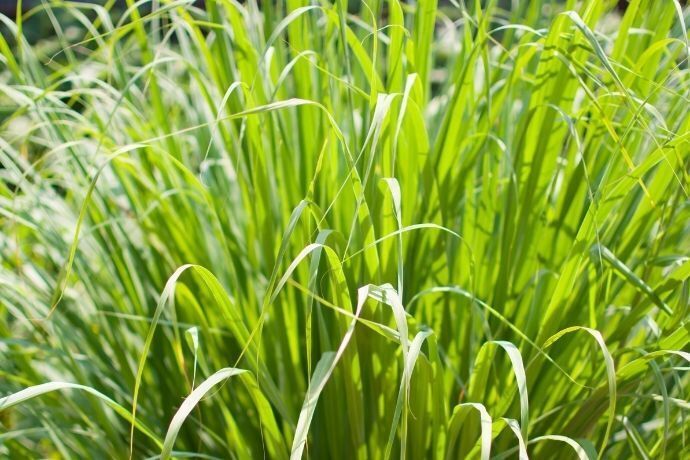
In the following topics we will talk about this tea, its origin, characteristics, properties and uses. To understand more about this drink and the plant used, we will talk a little further on all this information in detail.
Origin and history of the lemongrass plant
Lemongrass, whose scientific name is Cybopogon citratus, whose Latin word "citratus" refers to the citrus flavor of the herb, is a plant native to the tropical regions of Asia, found in Sri Lanka and South Asia. In Brazil and other tropical countries the plant is widely cultivated, both for use in recipes and home teas, and also for industrial purposes.
This plant is also known by several other names, such as lemon grass, holy grass, lemon balm, lemongrass, belgate, road tea, prince tea, cabbage tea, lemongrass, lemongrass, lemongrass, horseradish grass, horseradish grass, sea grass, marsh grass, camel grass.
Its origin may be linked to the Indian trade, in which its therapeutic properties were enjoyed by pilgrim ancestors. Lemongrass was also used as a flavoring in fabrics so that traders could distinguish fabrics from other regions.
Characteristics of the plant capim-santo
This is an aromatic, perennial, herbaceous plant belonging to the Poaceae family, in which grass, grasses and turf can be found. It can grow to 1.2 to 1.5 meters tall, and must be cultivated under the sun, so places with a tropical climate help its growth and cultivation. It exudes a strong lemon-like odor, which makes it commonly known as lemongrass.
The plant prefers not very humid soils, being present in tropical and temperate regions. Its plantation is done by breaking off pieces of the mother clump, and then planting them in a well sunny place one meter away from each other. Each seedling will originate a new clump.
Capim-santo has long, light green leaves with sharp margins. Its flower clusters have yellowish branched clusters. Since it is a plant that easily adapts to any type of soil and climate, it can be planted in pots, beds and planters.
This herb helps to preserve roads, because it firms the soil well, consequently preventing erosion, for this reason, another common name of it is road tea. It grows spontaneously, preferring humid soils, however it does not support cold regions. It produces numerous cuttings of its leaves throughout the year.
What is lemongrass tea used for?
Lemongrass tea has several uses for our health. Among them we can mention its calming effect, which helps to combat problems such as stress, anxiety, insomnia, PMS symptoms, to treat Alzheimer's disease, gastrointestinal problems, and headaches.
Properties of the plant lemongrass
Lemongrass is packed with phenolics and flavonoids, which are responsible for its antioxidant, calming, relaxing, antispasmodic, and anti-inflammatory effects.
Its antispasmodic action can also help menstrual cramps in women and also of spasms in the stomach, intestine and bladder. The micerno, another active ingredient of lemongrass can bring a sense of tranquility and relaxation.
From its leaves, an essential oil can be made which can be used in massage and also as an aromatic room spray, leaving a delicious citrus scent.
Both have the same purpose of calming, and also sedating. If you are on a bad day, or feeling tired, stressed and very nervous, try going to a masseur and ask him to give you a relaxing massage using lemongrass essential oil.
This powerful plant also helps fight free radicals, which help prevent premature aging of our body's cells, which helps prevent against cancer, cardiovascular, muscle and brain problems.
It is a plant full of fiber as well, which helps to improve the functioning of our digestive system. It helps in cleaning the skin in the form of tonic, cleansing your oily skin because of its antiseptic properties.
Lemongrass also has other uses such as controlling and lowering fever, being an insect repellent, cleaning teeth and gums, and also in aromatherapy, in which besides relaxing the body, it also stimulates the mood and also helps control high blood pressure.
Benefits of lemongrass tea
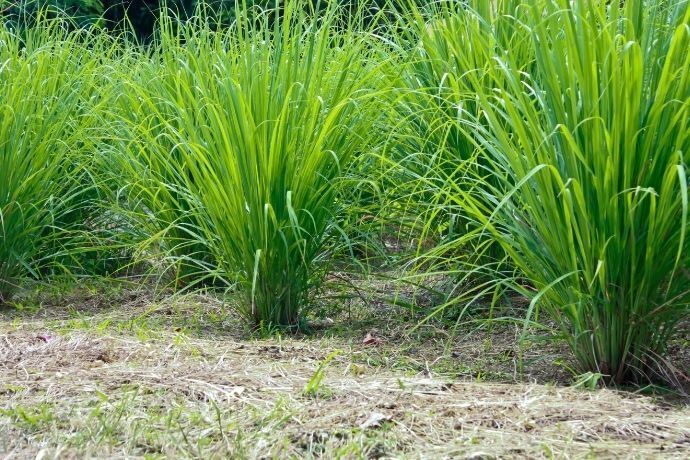
Lemongrass tea is full of several health benefits, including helping you lose weight, fighting insomnia, treating candida and even preventing the dreaded cancer. Check out the following topics to learn more about how this tea helps benefit our body.
Acts in the treatment of gastritis
Lemongrass is composed of flavonoids and tannins, which have anti-inflammatory and antioxidant action helping to reduce stomach acidity, helping in diseases of the gastrointestinal tract such as gastritis and reflux.
The tea also has bactericidal properties, in which help fight Helicobacter pylori a harmful bacteria that lives in our stomach and can lead to gastritis, peptic ulcer and even cancer.
The drink can also help in the elimination of intestinal gases, relieving the discomfort of stewing caused by these gases.
Combats bad breath
This tea can be prepared as a tea or mouthwash to combat bad breath in the mouth, through its bactericidal and antiseptic action. This drink can remove bad breath caused by the accumulation of bacteria in the mouth that can cause gingivitis, a disease which causes swelling of the gums.
Helps to lose weight
Lemongrass tea is a powerful diuretic, helping the body to eliminate excess fluid consequently reducing the swelling of the belly and helping in diets to lose weight.
Ideally, drink a cup of the beverage half an hour before consuming your breakfast, lunch and dinner.
Relieves head and body aches
This plant has myrcene and citral, which are two compounds with analgesic properties, relieving pain both in the head and in other places of the body such as the belly or muscles. Its compounds help relax the muscles and blood vessels, relieving muscle tension.
The ideal is to prepare an infusion of five leaves for each cup of tea of water and consume two to three cups a day. Lemongrass can still be used to treat in the relief of muscle pain in the form of a paste mixed with coconut oil.
Fights insomnia and anxiety
In its composition lemongrass has citral that acts as a natural sedative, which helps the quality of our sleep, because it messes with our central nervous system that goes into extensive activity while we sleep.
This drink can also be an excellent calming agent, and can improve problems such as anxiety and stress.
Studies show that drinking lemongrass tea twice a day for fifteen days helps to improve sleep in people with insomnia. The combination of lemongrass and valerian can help a lot with this disorder, as well as calming.
Helps lower cholesterol levels
The antioxidants present in lemongrass like limonene and geraniol not only help fight free radicals that cause premature aging of our skin, but also prevent fat cells from oxidizing, which helps lower bad cholesterol (LDL) in the body.
They are also responsible for decreasing the levels of triglycerides that can generate health problems such as heart attack and stroke.
Helps control blood pressure
The diuretic properties of lemongrass not only help retain fluids in our body, but also assist in the elimination of substances such as sodium through urine, controlling our blood pressure.
The oxidant compounds present in this plant such as citral, limonene and geraniol decrease the inflammation of the arteries, leaving them more relaxed, facilitating the course of blood in our body, preventing high blood pressure and other cardiovascular diseases.
Prevents cancer
The natural antioxidants in lemongrass help fortify our immune system, preventing us from the dreaded cancer by preventing the reproduction and development of cancer cells.
Helps the healing of the skin
Lemongrass tea can help in accelerating the healing of wounds and injuries thanks to its antimicrobial action that inhibits the growth of microorganisms such as bacteria, fungi, viruses and protozoa.
Acts in the treatment of candidiasis
Thanks to the antimicrobial action present in lemongrass it can also be a powerful fungicide, which can assist in vaginal and oral candidiasis, fighting the fungus Candida albicans.
Lemongrass tea can also help treat other diseases that come to be caused by fungi, such as mycosis for example.
Recipe for lemongrass tea
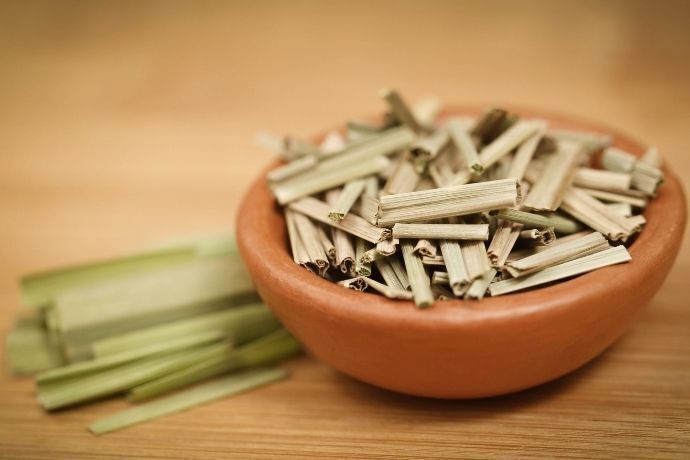
Lemongrass tea is very simple to make, and it will not take much of your time to prepare it. We will talk more about its ingredients and how to prepare your tea below.
Ingredients
You will need one teaspoon of chopped lemongrass and one cup of water.
How to do
Insert the water to boil and as soon as it comes to a boil, turn off the heat and pour the boiling water on the herbs, which can be between four to six cut leaves. Leave the liquid steaming with a saucer or plate on top for about ten minutes and after that time strain and serve in a cup or glass.
Further information about lemongrass tea
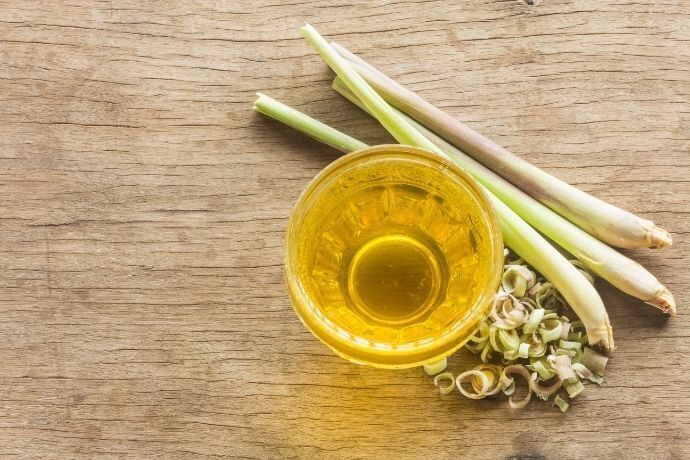
There is a lot of other important and interesting information about lemongrass tea, including tips on how to prepare your tea, other plants that can be combined with your drink, and also contraindications and side effects for it. Below we will talk about each of these topics in a little more detail.
Tips for making your capim-santo tea
Avoid boiling the leaves of capim-santo, because they can lose their properties and effects, being the infusion method the best indicated. If you want to prepare half a liter of tea for consumption, use twenty leaves, but you can prepare a larger amount to take throughout the day.
Therefore, lemongrass tea should be consumed on the same day, as its properties will be lost over the passing days.
Herbs and plants that go well with lemongrass tea
Lemongrass tea can be mixed with orange leaves, passion fruit flower and lettuce leaves to make a soothing tea.
The drink can also be combined with other plants and herbs such as cinnamon, sucupira, cat's claw, chamomile, mulungu, calendula, and sweet grass.
Other ways to use lemongrass
Lemongrass can be consumed in many forms other than the famous tea. Using its leaves, you can make essential oil, which can be used in aromatherapy due to its mild sedative effect. There is also the option of chewing it in its pure form, such as we do with mint.
You can find in compounding pharmacies, the product in capsules and natural extracts containing lemongrass. There are also several other variations of lemongrass tea, such as those that use a touch of lemon, pineapple, ginger or honey.
The juice of this herb can also be a good choice. And it is a very simple and refreshing recipe. To prepare the lemongrass juice you must chop its leaves and put them in the blender along with 200 mL of water, lemon juice, ice and honey to taste. Then beat the mixture well and enjoy this very cold juice.
In folk medicine it can be used in the form of an infusion of the leaves, which can serve as an analgesic, calming, or diuretic. In Ayurvedic medicine it is used to bring down fever, treat coughs, and in the treatment of infectious diseases. The paste made from its crushed leaves can be used to treat mycoses.
It is also used in traditional Chinese medicine, treating headaches, stomach, and abdominal pains. In Thai cuisine, lemongrass can have its stalk consumed fresh as a seasoning to enhance culinary dishes such as pastas and stews.
The herb can also be mixed alongside citrus fruits like lemon-kaffir, whose leaves can be blended to create a sweet syrup called Cordial. Thanks to a Japanese discovery, the plant can be used to make an essential oil that can kill the stomach bacterium Helicobacter pylori causing stomach ulcer and cancer.
Possible side effects of lemongrass tea
The use of lemongrass tea is safe when it is consumed for up to four months by adults and up to one month by infants and children.
However, if this beverage is consumed in excessive amounts or for long periods beyond what is recommended, it can cause nausea, vomiting, abdominal pain, dizziness, decreased heart rate, drowsiness, dry mouth, weakness, decreased blood pressure, and labored breathing.
When using the herb on the skin in the form of cosmetic products should also be careful not to expose yourself to the sun's rays, as skin burns can occur.
Contraindications to lemongrass tea
For now no contraindications for the use of lemongrass tea have been described. However, you should avoid consuming the drink if you use any sleeping medication, because they can have their sedative effects enhanced and then cause excessive drowsiness or even fainting, because they lower blood pressure.
Taking lemongrass tea together with sedative medicines such as Lorazepam (Lorax®), Bromazepam (Lexotan), Diazepam (Valium), Alprazolam (Frontal), Lormetazepam, Zolpidem (Stilnox) can also potentiate its sedative effects, causing excessive sleep.
The tea can also interfere with the effect of thyroid medication, so the ideal is to cut the use of the drink while undergoing treatment. Glaucoma patients should also avoid consuming this tea.
Women who are pregnant or breastfeeding their babies should also be wary of consuming the tea of this herb, as it can cause the risk of miscarriage.
Lemongrass tea has many benefits!
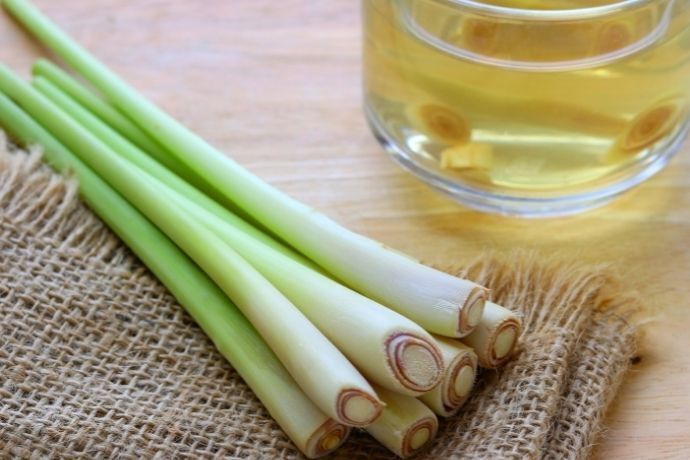
Lemongrass tea is a drink that can bring several benefits to your health, if consumed correctly and moderately. Its calming effect can help de-stress you and leave you more relaxed, besides helping to have a healthier sleep and also to ease the effects of PMS in women.
It has antioxidants that help prevent premature aging of our cells, avoiding diseases such as cancer and also heart attack and other cardiovascular diseases. Its antimicrobial action helps not only in wound healing, but also to eliminate fungi and bacteria such as Candida albicans that causes candidiasis, Salmonella sp causing salmonella or Escherichia coli.
Behind so many benefits, we must be aware of the consumption of this drink. Do not consume in an exaggerated way, and also avoid its use if you are using medicines for insomnia or sedatives. Taking all these precautions you can enjoy all the advantages of this delicious drink, whether hot or cold.

